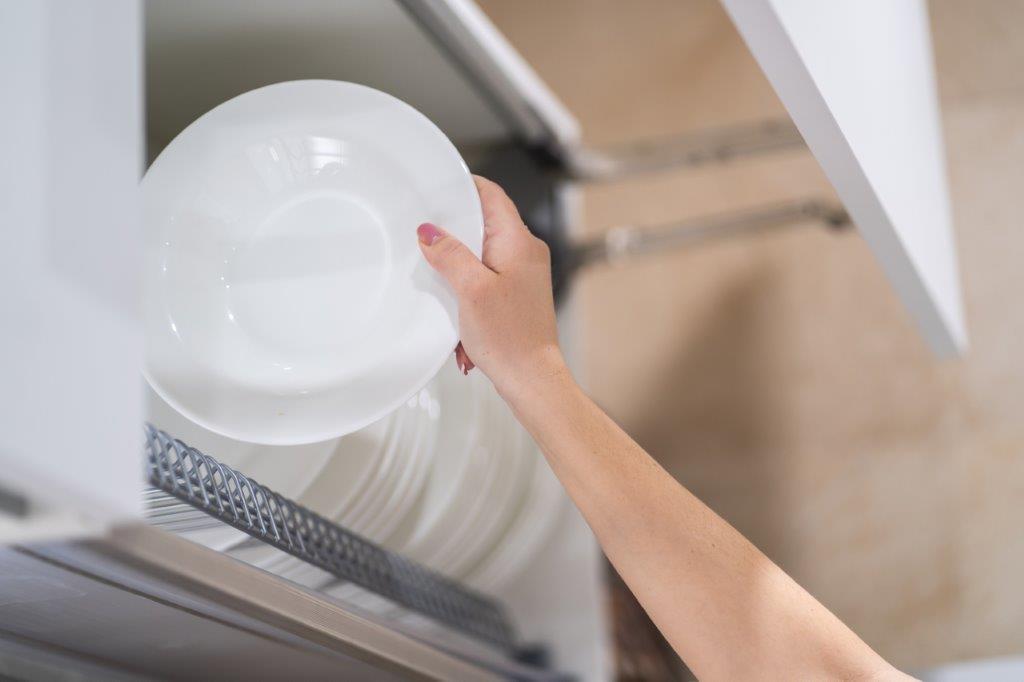
Locating cabinets so high that they are beyond a comfortable reach can mean overextending our arms unsafely and potentially risking physical injury or not controlling (dropping) what we are retrieving
Access is more than just gaining entry
When people mention or discuss access with respect to a home, the point of entry into the home or the ability to use a doorway often comes to mind. Nevertheless, an equally important part of looking at, evaluating, and considering residential access is the ability of someone to reach, grasp, and use various items in the home.
Doorways are important. Make no mistake, but getting through a doorway – the front door, side door, rear door, or even the door in the garage (whichever is the preferred means of entry for occupants and their close friends), or an interior one – is just the beginning to having successful mobility and access within the home.
So often we concentrate on the most obvious aspect of access – entrances and passageways – and focus just on the people living in the home rather than all who might come into it and use it. This – especially at holiday times of the year – would include visiting family members (who come for the day, overnight, or a more extended stay), neighbors, friends, and guests of those who tag along.
Starting at the beginning – the foyer
To begin appreciating the various aspects of access, we’ll start in the foyer or entry and determine if there is sufficient room for people to enter the home, close the door without moving out of the way of the swing, and move on to other parts of the home easily.
Moving on into the living room or the front hallway, we’ll want to locate the light switches, fan controls, and the thermostat (it should be a digital one rather than the dial or slide switch kind for ease of access and readability). The issue is whether anyone in the home – standing or seated – who is old enough to know what they are doing is able to reach and operate them easily.
Then we should proceed to other rooms and areas of the home as we look for switches, dimmers, and controls there – as well as access points into those spaces and any obstacles to an easy passage that might be present.
The kitchen presents many concerns
The kitchen is a very important center in the home for working and gathering so we should look at cabinet and pantry door handles, knobs, and pulls, along with drawer pulls. These often present some real challenges to people in terms of being able to grasp them easily and use them to open the cabinets or drawers easily – and safely. Sometimes the knobs and pulls are small – hard to grasp with fingers or joints that don’t cooperate. Sometimes a little physical strength is required. Often they have excess material in the form of an extension that protrudes beyond the mounting post that can catch pockets, belt loops, shirt sleeves, or other items of clothing – even unprotected skin.
Some cabinet doors have no handle or knobs and just pull open or pop open – requiring a little strength, dexterity, and range of motion. They might have a magnetic latch that pops the door open when depressed slightly. This is a good alternative to grasping a handle or pull but does require a little physical effort and insight into how they work.
Drawers can be trickier to open because they can be heavier and wider. Sometimes they need to be opened by applying an even, continuous, force to both sides to keep the drawer opening smoothly and parallel to the cabinet face without binding.
Then, there is the matter of appliances and how high or low they are from the floor, the types of handles they have (and how easy they are to grip and how much effort is needed to use them), and how the doors or operating parts are opened or controlled. Range hoods and wall ovens often are mounted far too high for many people to use well or access easily.
Continuing through the home
Then we continue to the bedrooms, the bathrooms (where there are many areas concerning us that involve effective and reasonable access), laundry room, family room, and other areas of the home (not all homes have the same number of rooms, functions, or layout).
As we make our way through the home, we are concerned with passageways (getting from one room or space to another without difficulty or obstacles), doorway widths and door swings (unless they are a sliding door or a cased opening), flooring that provides solid footing with a color or pattern that is not confusing to the person walking on it, and sufficient lighting to illuminate spaces well and eliminate shadows or poorly lit areas
Reach and grasp are issues throughout the home
Definitely, reach, grasp, and range of motion factor prominently into how we design space for our clients to use.
A person can lose their balance, fall, injure themselves, or drop what they are attempting to retrieve (a glass or cup, plate, dish, or canned or boxed foodstuffs if they have to extend their arm too far or grasp too much weight or dimension in their hand). This can lead to additional injuries as people are subject to being cut or slipping in or on what has fallen, broken, or spilled.
Don’t underestimate the importance of this concept of reach, range of motion, and grasping!
